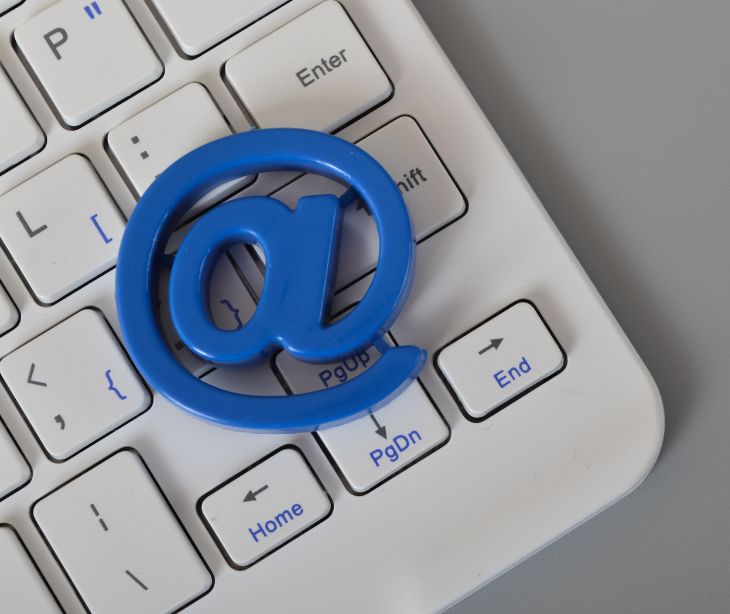
A HIPAA disclaimer is a text block at the bottom of an email letting the recipient know that the email may contain protected health information (PHI).
Using a HIPAA email disclaimer
A HIPAA email disclaimer is a statement in emails sent by healthcare providers, health plans, and other entities covered by HIPAA. The disclaimer informs recipients about the confidentiality and security of the email, especially if it contains PHI. While disclaimers are not required by law, they help patients know their data is secure and can be helpful if a legal issue or audit arises.
Learn more: Do disclaimers make emails HIPAA compliant?
Key components of a HIPAA email disclaimer
A well-written email disclaimer will include four main components:
Confidentiality notice
- Purpose: To notify the recipient that the email may contain confidential and protected health information (PHI) intended only for the designated recipient.
- Example: "This email and any attachments may contain confidential and privileged information that is intended for the sole use of the intended recipient."
Unintended recipient clause
- Purpose: To instruct recipients who may have erroneously received the email to notify the sender and delete the email.
- Example: "If you are not the intended recipient, you are hereby notified that any disclosure, copying, distribution, or use of this information is strictly prohibited. Please notify the sender immediately by replying to this message, and then delete this email from your system."
Security warning
- Purpose: To inform the recipient about the risks associated with email communication, particularly the potential for unauthorized access and lack of encryption, allowing patients to decide whether to continue using it.
- Example: "Please note that email communication is not always secure. While we take precautions to protect your information, we cannot guarantee the security of email communications."
Compliance statement
- Purpose: To provide notice that the sender is compliant with HIPAA regulations and takes the protection of PHI seriously.
- Example: "We comply with HIPAA regulations and are committed to safeguarding your health information."
Why use a HIPAA email disclaimer?
- Legal compliance: To demonstrate that the organization is aware of HIPAA requirements and is taking steps to comply with them.
- Risk mitigation: To mitigate potential risks by instructing unintended recipients on what to do if they receive PHI in error.
- Patient trust: To communicate a commitment to protecting patient information that can help build trust with patients and other stakeholders.
Best practices
Standardize the disclaimer
- Create a template: Develop a standardized disclaimer template to ensure consistency across all organizational emails.
- Automate: Use email management tools to include the disclaimer in outgoing emails automatically, reducing the risk of human error.
Related: Are email templates HIPAA compliant?
Use clear language
- Avoid jargon: Use simple language that can be easily understood by all recipients, including non-professionals.
- Be brief: Keep the disclaimer concise and to the point to avoid overwhelming the recipient.
Consider placement
- Footer placement: Place the disclaimer at the end of the email, in the footer, to ensure it doesn’t interfere with the main message content.
- Visibility: Ensure the disclaimer is visible; do not shrink or lighten the font.
Legal review and updates
- Consult with legal counsel: Have your HIPAA email disclaimer reviewed by your legal team to ensure it meets all regulatory requirements and adequately protects your organization.
- Periodic review: Regularly review and update the disclaimer to ensure it remains compliant with HIPAA regulations or organizational policies.
Include in all relevant communications
- All outgoing emails: Ensure that the disclaimer is included in all emails containing PHI or other sensitive information, not just those sent to patients.
- Internal and external emails: Use the disclaimer for both internal and external communications that involve PHI.
Related: Can you email PHI internally?
Use with other security measures
- Encryption: Use email encryption to secure PHI during transmission. Disclaimers alone are not sufficient to protect sensitive information.
- Secure messaging platforms: Where possible, use secure messaging platforms that offer better protection than standard email. Paubox Email Suite is a HIPAA compliant email platform that can be considered for use in your organization.
Compliance monitoring
- Audits: Conduct regular audits to ensure that the HIPAA email disclaimer is being consistently applied and that emails are being sent in compliance with HIPAA regulations.
- Feedback loop: Establish a process for receiving and addressing feedback or issues related to email security and disclaimers.
See also: HIPAA Privacy, Security, and Breach Notification Audit Program
FAQs
Is a HIPAA email disclaimer legally required?
While HIPAA does not specifically mandate email disclaimers, they are a best practice to help ensure compliance with HIPAA's privacy and security rules and to protect PHI.
See also: Why email disclaimers are not enough for HIPAA compliance
Can personal email accounts be used to send PHI if a HIPAA disclaimer is included?
Personal email accounts should not be used to send PHI, even if a HIPAA disclaimer is included. Only secure, organization-approved email systems that comply with HIPAA security requirements should be used for sending PHI.
Can a HIPAA email disclaimer prevent breaches of PHI?
No, a HIPAA email disclaimer alone cannot prevent data breaches. It should be part of a broader strategy that includes secure email practices, encryption, and employee training.
Subscribe to Paubox Weekly
Every Friday we'll bring you the most important news from Paubox. Our aim is to make you smarter, faster.



